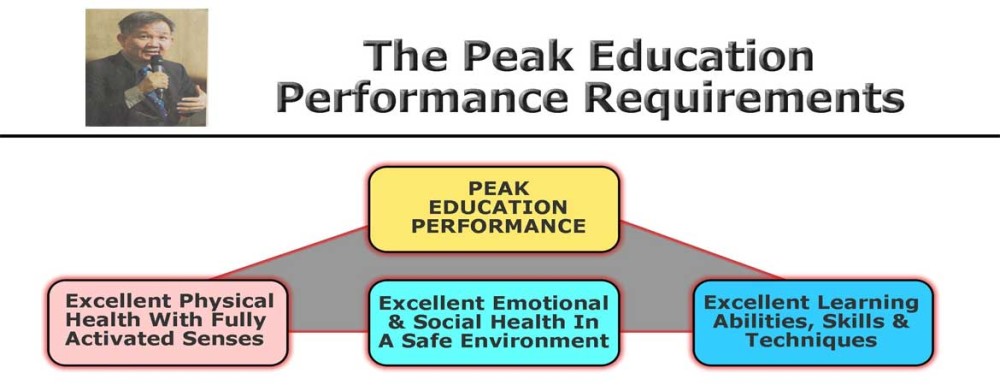Learning Abilities, Skills & Techniques
After nurturing the child to be physically healthy with fully activated senses and emotionally stable, self-confidence, trusting teachers and other authority figures, able to communicate and work together with friends and willing to do hard things and persevere; we have a most excellent child well prepared to be taught learning abilities which are needed skills to handle all kinds of school subjects, contents and materials.
The 3 basic presentation of objects used in education are figural (pictures or forms representing actual things with its associate sounds such as colors), symbolic (representative images that carry meaning such as mathematic symbols like 1, 2, 3…., +, -, x, etc – with its associated sounds), semantics (such as languages representation – with its associated sounds).
For each type of presentation, the basic skills required are:- abilities to differentiate, recognize, categorize, remember, recall and give names (vocabulary). For young children at the pre-primary level, the child should have been prepared for 13 basic learning abilities to prepare for primary school.
By the end of primary school, the child should have developed 30 learning abilities, skills and techniques as subjects, contents and materials are usually presented in multiple forms which can be rotated and transformed from each other as in a system similar to Rubic’s cube.
As the child develops further, even more finer tuned learning abilities are required to handle more data which can overwhelms students who are not properly prepared.
At the university level, thankfully students are allowed to specialize and choose their major field of studies. Where they are strong in figural learning abilities, these students will choose architectural, building, designs and some engineering. For those strong in symbolic learning abilities, they would choose engineering, sciences, programming and some teaching. For those strong in semantic learning abilities, they would usually choose languages, communication science, business, teaching etc.
When all students are trained in learning abilities, their choices will be greatly expanded and more students could easily handle double majors and even take on more degrees across different faculties. Cross disciplines graduates have distinct advantages and are highly valued in getting employment, and can do research or better prepared to do business on their own.
Comments are closed


